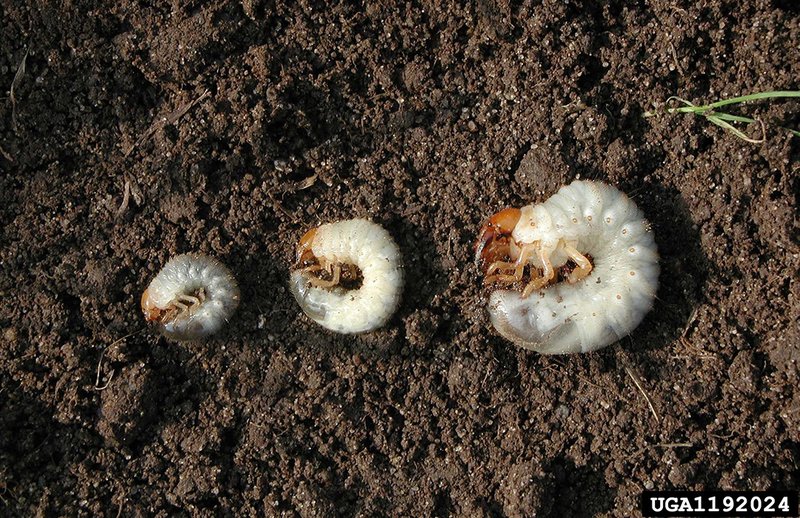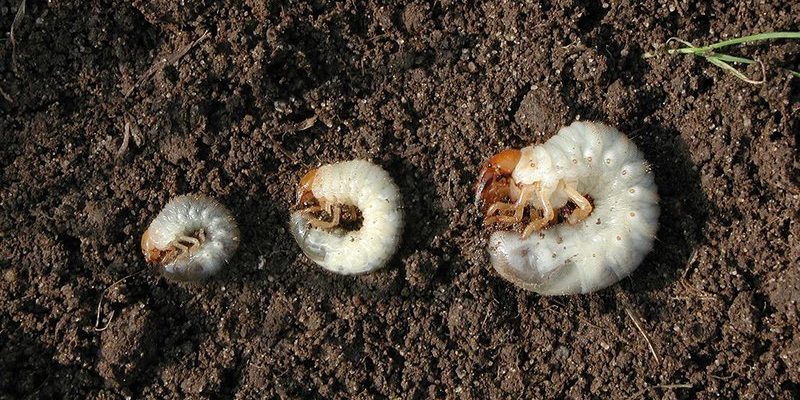
In nature, these little guys can belong to various species, and some can cause more trouble than others. Understanding the differences between them is essential, especially if you’re hoping to protect your garden or lawn from potential damage. Let’s dig deeper—pun intended—into the fascinating world of white grubs.
What Exactly Are White Grubs?
White grubs are the larval stage of certain beetles, including the notorious Japanese beetle and the June bug. They’re usually C-shaped, with a soft, white body and a brownish head. You might find them nestled in the soil, munching on roots and organic matter. While they might look harmless, some species can wreak havoc on your garden by feasting on your plants’ roots.
Typically, white grubs thrive in moist, warm conditions. You might spot them in your garden during summer, especially if the ground is disturbed. If you’ve ever turned over soil or dug around in your backyard, you may have encountered these little critters. But how do you tell them apart?
How Many Species of White Grubs Are There?
There are several species of white grubs out there, and they don’t all behave the same way. In the U.S. alone, you’ll find around 25 different types, but the most common ones include the **Japanese beetle larvae**, **June beetle larvae**, and **masked chafers**. Each species has its unique growth habits, lifecycle, and even damage potential.
For instance, the Japanese beetle larva is known for its destructive nature, while others, like the masked chafer, may not pose a significant threat to your garden. Knowing which species you’re dealing with can help you choose the right strategy for managing them.
Identifying Common White Grub Species
Identifying the specific species of white grub you’re dealing with can sometimes feel like a guessing game. However, there are some clues you can look for:
- Size: Different species vary in size—some may grow up to two inches long, while others are quite small.
- Head Color: The color of their heads can also provide hints. For example, Japanese beetle larvae typically have a brownish head, while June beetle larvae have a darker head.
- Body Shape: Most grubs are C-shaped, but subtle differences in the curve can be a clue.
If you’re still unsure, consider taking a picture and seeking help from gardening forums or local agricultural extensions. They can help pinpoint exactly what you’re dealing with.
Why Does It Matter to Identify Them?
Identifying different white grub species is crucial for several reasons. First, some are more harmful than others. For instance, **Japanese beetles** can cause severe damage to your lawn and garden, while others might just be innocent bystanders. Knowing the difference helps you decide whether you need to take action.
Moreover, using the right control methods can save you time and money. Pesticides might be an effective solution for one species but completely ineffective against another. Basically, the more you know, the better prepared you’ll be.
Common Problems Associated with White Grubs
So, what kind of trouble can white grubs cause? Well, that depends on the species. Here are a few common problems to look out for:
- Lawn Damage: White grubs can munch away at grass roots, leading to brown patches and areas that look dead.
- Animal Visitors: Birds and mammals may dig up your lawn looking for grubs to snack on, causing additional damage.
- Plant Problems: In gardens, grubs can weaken plants, affecting their growth and yield.
By recognizing these problems early, you can take action before the damage becomes extensive.
How to Manage White Grub Populations
Once you’ve identified the species, you’ll want to think about how to manage them effectively. Here are some strategies to consider:
1. **Natural Predators:** Encourage birds and beneficial insects that feed on grubs to take residence in your yard. You can create a bird-friendly environment by adding feeders and nesting boxes.
2. **Nematodes:** These tiny, beneficial worms can be introduced to your soil. They target grubs and help keep numbers down naturally.
3. **Chemical Controls:** If the infestation is severe, you might consider pesticides. Just remember, not all products work for all species. Always read the label and follow instructions carefully.
4. **Cultural Practices:** Practices like proper lawn care, including aeration and watering, can make your lawn less hospitable to grubs.
In summary, not all white grubs are the same species, and differentiating them can make a world of difference in your gardening experience. Understanding their characteristics, behaviors, and potential threats can help you protect your lawn and garden effectively.
Whether you’re a seasoned gardener or just starting, it’s worth taking the time to learn about these little critters. With the right knowledge and tools, you can maintain a healthy, thriving garden. So next time you spot a white grub, remember, there’s often more than meets the eye—just like that box of chocolates!

